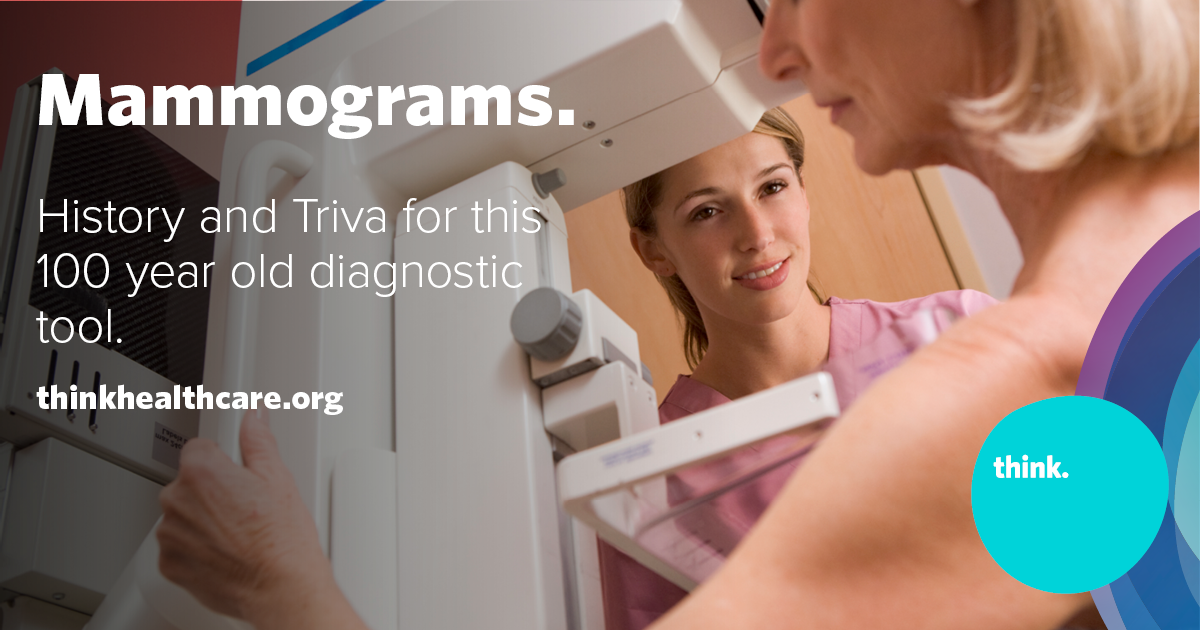Mammography began in 1913 when a German Surgeon named Albert Salomon started a study on 3,000 mastectomy patients. Over the next 100 years, impressive advances have made receiving a mammogram less uncomfortable and significantly more accurate.
In 1930 a radiologist in New York used stereoscopic techniques to guide in surgeries.
Then, in 1931 the implementation of radiography helped classify benign breast lesions to help identify carcinoma.
In 1950, Dr. Jacob Gershon-Cohen published an article emphasizing the importance and effectiveness of high contrast images using compression.
Digital mammography was approved by the FDA. Digital imagery removed the need for screen film and proved to be far more superior to screen-film mammography. Techniques in mammography remained somewhat unchanged until 2011 when the FDA approved 3-dimensional mammography. Think Whole Person Healthcare utilizes 3D mammography technology for all of their mammograms.
How many lives do mammograms save?
Mammograms are critical in the early detection of masses in breast tissue. Oftentimes, masses can be detected well before they can be felt through palpation exams. Routine mammograms have helped reduce the cancer mortality by nearly 40% since 1990.
Recommendations for routine mammograms.
Cancer.org recommends women begin routine mammograms as early as 40. Think Whole Person Healthcare offers high-resolution 3D mammograms in the building. Contact your Primary Care provider to schedule your routine exam today.
Women ages 40-45 should have the choice to start annual breast cancer screening with mammograms.
Women ages 45-54 should receive annual mammograms.
Women 55 and older should receive mammograms every two years unless otherwise directed by their physician.
Women of all ages should perform monthly self-examinations which involves visual exams and feeling each breast for possible lumps, distortions or swelling.
What should I expect when getting my mammogram?
You will need to be undressed from the waist up. You will be given a wrap or gown.
The technologist will position your breasts for the exam. The technologist is the only other person in the room with you.
Your breasts will be flattened. This will give the best reading possible of your breast tissue. Some patients report this is somewhat uncomfortable, but only lasts a few seconds while the picture is taken. If you experience pain or extreme discomfort, tell your technologist
Seven tips when getting a mammogram
- Get your mammogram from the same location each time—preferably from a facility that performs several a day.
- Bring a list of previous locations if you transfer from somewhere else.
- Avoid scheduling your mammogram when your breasts are tender or sensitive.
- Select clothing that is easy to remove. We recommend a blouse or top and separate pants or skirt. This way you only need to remove your top for your exam.
- Don’t wear perfume, lotions, deodorant or antiperspirant to your mammogram. Ingredients in these products can cause false positive readings.
- If you have implants, let the technician know before the procedure.
Always schedule your next mammogram BEFORE you leave!
